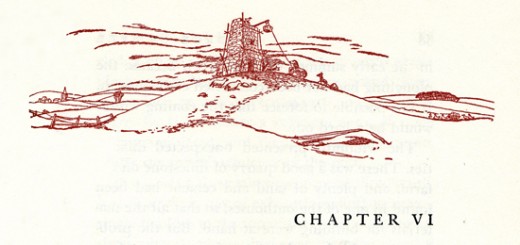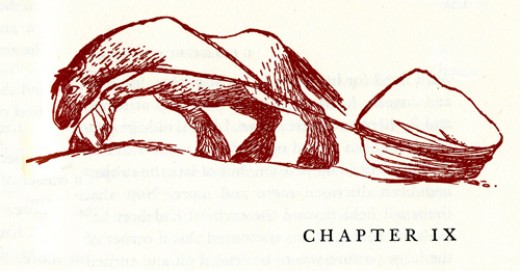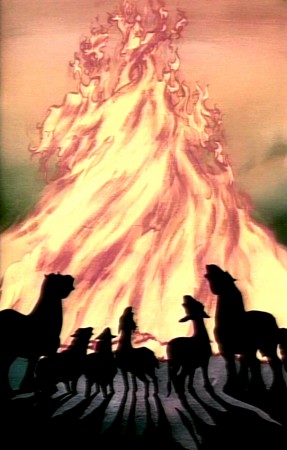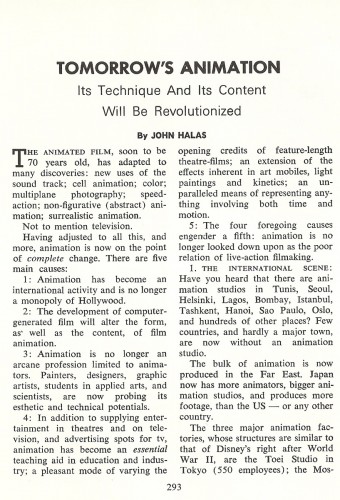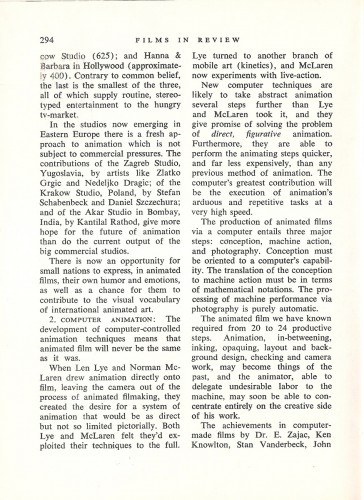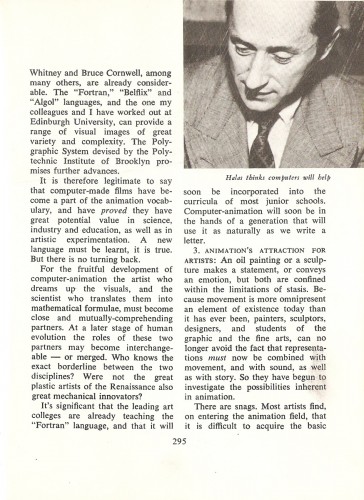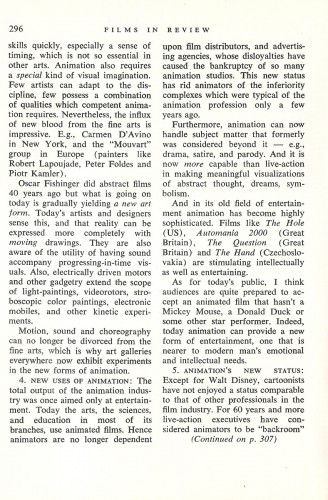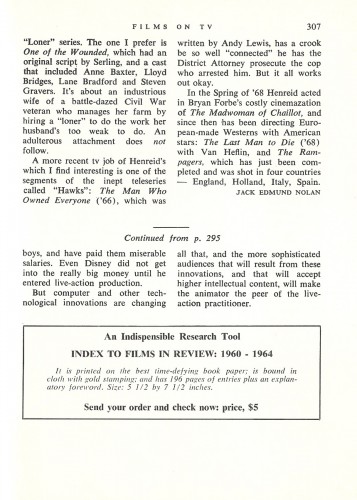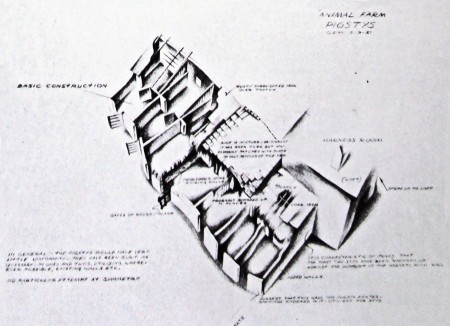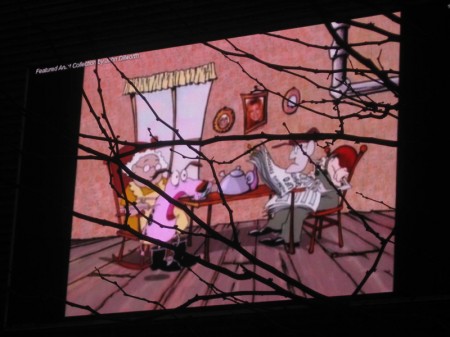Search ResultsFor "animal farm"
Commentary 13 Apr 2013 05:49 am
Bruising the Squiggle
M’friend, Steve Fisher, sent a really nice little essay (not for posting but just something he wanted to share with friends). Unfortunately, anyone who sends me anything has to be prepared for it to end up in the public’s hands. It’s a quick read:
Once upon a time, far, far away… actually, it was really yesterday, and it was at the nearby Metro Mall in Middle Village.
I found that I was early for a meeting of Weight Watchers because I was confused as to what day it was, but that’s another story. In any case, I decided to walk around the area until the meeting time rather than return on another day for a different meeting. As the correct meeting time neared, I sought the men’s room of the adjoining Kmart.
As I completed using the facilities there, I heard someone enter the room. When I left the stall, I saw a young, black man standing alongside the lavatories. I have to admit that a hint of racial-profiling stirred to a conscious level. In my defense, though, I believe I would have been suspicious of this individual regardless of race because he was just standing there in a men’s room, not using the sink, the urinal, or the second vacant toilet stall; my New Yorker wary mind asked myself, What is this guy up to?
I walked past him in order to use the lavatory and he said, “Good morning.†This seemingly innocent comment raised more red flags, Who chats it up in a men’s room with total strangers? In a tone that did not invite further talk, I grudgingly responded, “Morning.â€
As I began to wash my hands, he said, “Can I ask you a question?†I looked up to face him, trying to judge just what was going on, sensing a dangerous situation developing. I took a closer look at him for the first time; I saw that he was probably not yet twenty years old. He wore a long-sleeve white dress shirt which hung out almost to the knees of his black jeans; a baseball cap was cocked at an angle on his head. I said, with hesitation undoubtedly palpable in my voice, “Okaaay.â€
He pointed to his own shirt and inquired, “Should I tuck this in?†“Do you work here?†I asked. “Interview,†he responded. “Yes,†I said definitely, relieved to finally understand where this fellow was coming from. “Thank you,†he replied, and proceeded into a stall, presumably to tuck his shirt into his pants. Here was not a threatening pervert, but a polite young man concerned to make a good impression at his upcoming appointment. As I left the men’s room I called out to him, “Good luck,†and he rejoined, “Thanks.†I hope he got the job.
The lay Offs
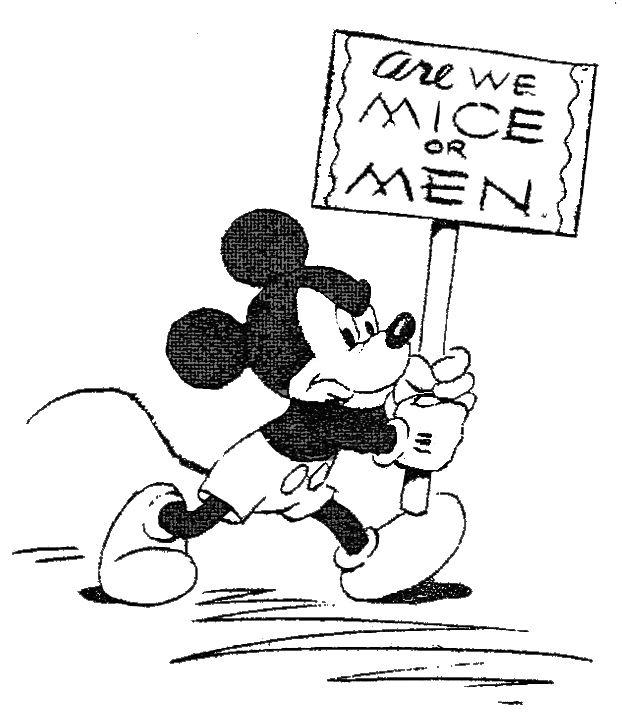 The reports started flying fast and furious on Thursday late afternoon. “Disney 2D animation had been gutted!” “Sad day for hand drawn animation.” As it turns out, the theatrical division of Disney, which has a small remaining staff of 2D animators finally let go of the majority of their staff. These are people who have not worked on any real projects since Winnie the Pooh. Everything done has been exploratory in the past year. Iger, himself, announced at the Disney board meeting that here was no 2D animation in progress, to his knowledge.
The reports started flying fast and furious on Thursday late afternoon. “Disney 2D animation had been gutted!” “Sad day for hand drawn animation.” As it turns out, the theatrical division of Disney, which has a small remaining staff of 2D animators finally let go of the majority of their staff. These are people who have not worked on any real projects since Winnie the Pooh. Everything done has been exploratory in the past year. Iger, himself, announced at the Disney board meeting that here was no 2D animation in progress, to his knowledge.
What did people think was going to happen? The studio was not going to continue to finance a division that wasn’t in production. Since Winnie the Pooh, the only real 2D division has been the television production staff.
There were announcements all last week about 150 people being let go at Disney’s studio. No one cried for the marketing people that were let go. I guess letting go the 2D theatrical people became an obvious symbol. A symbol that was too juicy for the likes of the chefs at Cartoon Brew and other internet muckrakers. Yet the obvious was just that. Wasn’t it clear that there was a real reason that Andreas Deja and others left the studio last year? Why is anyone acting surprised?
Sequester anyone?
The Real Effect
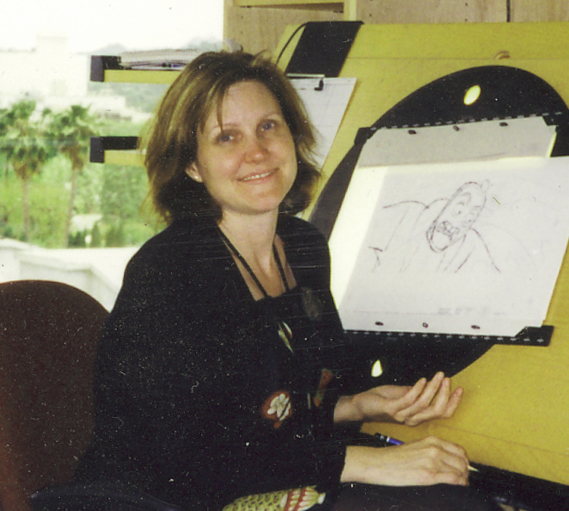 - Kathleen Quaife is an animator working in feature animation in Hollywood. Point of fact is that she’s an EFX animator. She’s done a lot of water in studio films of the 21st Century. She offers a couple of sample reels on her blog. I really enjoy animated effects, especially the hand-drawn kind. Computer animation seems, to me, to be an animation effect, in itself. Drawing all those waves and bubbles and cascading ripples by hand gets my attention.
- Kathleen Quaife is an animator working in feature animation in Hollywood. Point of fact is that she’s an EFX animator. She’s done a lot of water in studio films of the 21st Century. She offers a couple of sample reels on her blog. I really enjoy animated effects, especially the hand-drawn kind. Computer animation seems, to me, to be an animation effect, in itself. Drawing all those waves and bubbles and cascading ripples by hand gets my attention.
I suggest you take a look at the extraordinary samples on her blog here (lotsa clips from Disney). While you’re there, if you have the time, there are links to specific effects you can watch (e.g. water, fire, rain etc.).
Her resume is full: Hercules, Tarzan, Pocahonatas and Ferngully. Tummy Trouble, The Runaway Brain, and Pups of Liberty. The Land Before Time, Rockadoodle, Dragon’s Lair and An American Tale. She’s been doing great work for a long time, and she deserves a bit of attention.
She also has this entertaining video showing her drawing an animated splash.
Animating a Splash
Animation Scoop is Real
Yep, it’s real. The new animation site, Animation Scoop, was publicly announced by webmeister, Jerry Beck, and sure enough it was still there the next day. And Thursday, and Friday and today. I guess that means it’s lasted longer than most of the blogs out there, so we’ve got to say it’s a real thing. Let me jump to the front of the line to say I’m glad. I wouldn’t want any of the mass of animation news to pass under our noses, and another blog will certainly help us to keep track of it all. On top of that, it’s from Jerry Beck. You’ve got to love it. All we need now is some real animation. All we seem to have is product that’s been dredged up by a computer somewhere. We need something animated, something with dignity.
But seriously, congratulations Jerry, and more power to you. I love having another stop in the mornings.
Political Animals
I thought of this story while responding to a comment on the Splog:
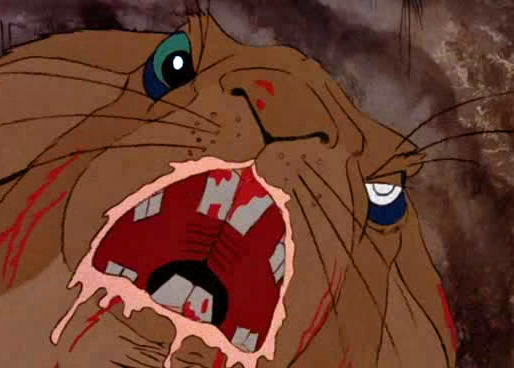 There was the day at the Hubley Studio when we knew that John had gotten the position of directing the film version of Watership Down. He’d take off for England in a few months and they’d set him up not too far from the office in an apartment.
There was the day at the Hubley Studio when we knew that John had gotten the position of directing the film version of Watership Down. He’d take off for England in a few months and they’d set him up not too far from the office in an apartment.
At one point during the day he and I were alone in my room. I told him I was glad he was doing it, Watership Down; I enjoyed the book. I went on about it saying it seemed like a more current version of Animal Farm. John said that he thought that Halas had really screwed up that film, and it was too bad. There was a lot of meat there, and he didn’t think they got it all in the film version. John felt that he wouldn’t make the same mistakes with Watership Down. We talked only briefly about Animal Farm.
I made plans to move on to Raggedy Ann & Andy. I had been writing to Dick Williams for years about my possibly working for him. Tissa David (the very first person Dick had hired; she did a 30 second sample Pencil Test which clinched the film for Dick) had broached him about hiring me, and I was offered a job as an inbetweener. (That turned into supervising all of the Assistant Animators and Inbetweeners.)
Several weeks later, after John Hubley had made a few trips to England preparing to start on Watership Down, he called me into his room. John said that he wanted to keep the US office going, at the very least doing a short that he had in mind. Tissa would animate it. (The short was going to be an extension of the section in Everybody Rides the Carousel which Tissa had animated. The piece where the two young lovers argue over her having cut her hair without getting his permission.) John wanted to know what it would take for me to stay on supervising the NY production work. I thought about it overnight and asked for him to match what Raggedy Ann was going to pay me to inbetween. It was about $20 a week more than I’d made working on the “Carousel.” John offered $5 less, and I decided to say, “No.” We parted amicably, and John didn’t keep his studio going for the time he worked on that feature.
I went back to work for him immediately on leaving Raggedy Ann. They were about to start Doonesbury, and I would supervise the production. I started at the same salary I’d made as an inbetweener at Raggedy Ann, including that extra $5.
Unfortunately, John was to have an urgent operation some three weeks after I’d started work on the new film. It was arranged that I’d leave and come back once he’d recovered and we could get back to work. John died on the operating table.
Books &Illustration &Layout & Design &repeated posts 07 Apr 2013 05:01 am
Joy Batchelor’s Animal Farm – recap
- When the film Animal Farm was released, a tie-in book was published which republished George Orwell‘s novel with line drawings from the film by “Joy Batchelor and John Halas.”
It’s probable that Joy Batchelor did illustrate the book. On a recent post, Rudy Agresta remembered Vivien Halas discussing her mother’s illustrating it in the book Halas & Batchelor Cartoons. I haven’t found that passage in Vivien’s book.
The animated film was produced by Louis D. Rochemont Associates in 1955 at a studio they set up in Stroud, Gloustershire in England. The studio was formerly the home of the Anson-Dyer company and GB Animation wherein ex-Disney veteran, David Hand, made his short films for Rank.
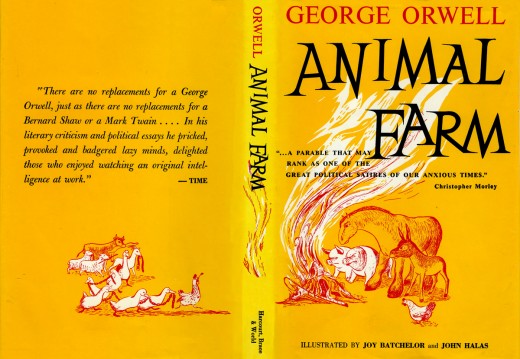
This is the book’s dustcover._________________________ (Click any image to enlarge.)
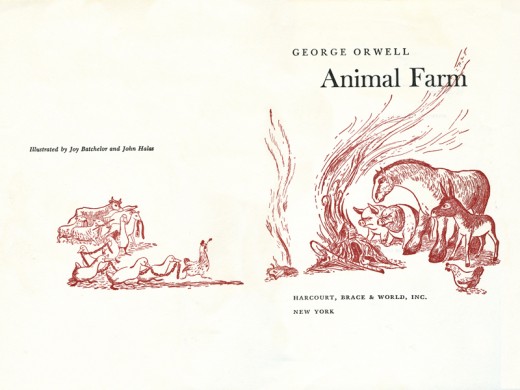
This is the double/title page.
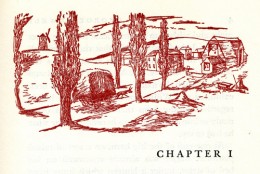
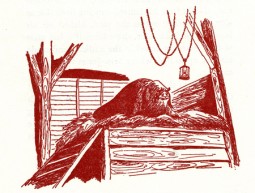
Each chapter has its own heading, and there are usually one to two stills within the body of each chapter.
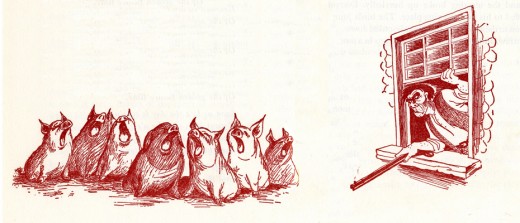
Some of the illustrations, like this one, spread across two pages under the type.
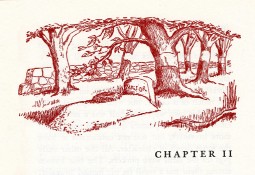
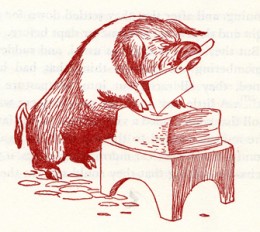
For those of you unfamiliar with this story, it tells the tale of a farm wherein the animals are mistreated.
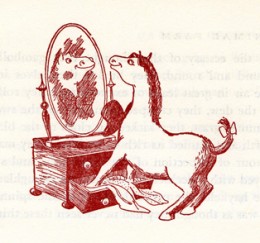
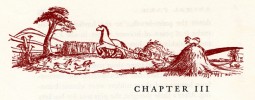
Under the guidance of the pigs, the animals take over the farm and create an animal collective.
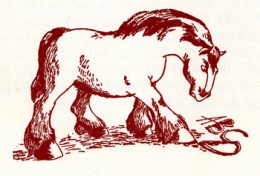
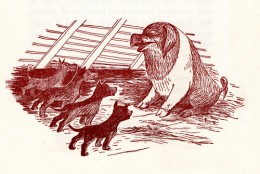
However, the pigs grow lazy and do less of the work as they take charge of the others.
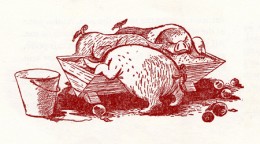
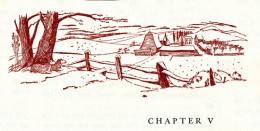
They eat more than their share of the food and mistreat the animals who do the greatest amount of work.
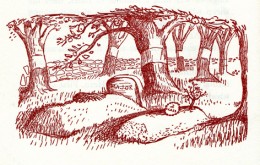
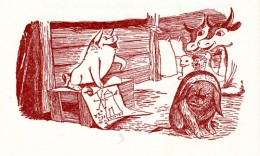
As animals begin to die under the guidance of the lazy pigs, there is some grumbling among the masses.
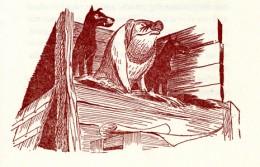
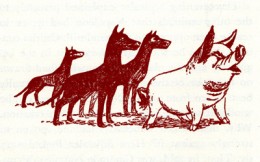
The pigs dominate and rule with a heavy hand.
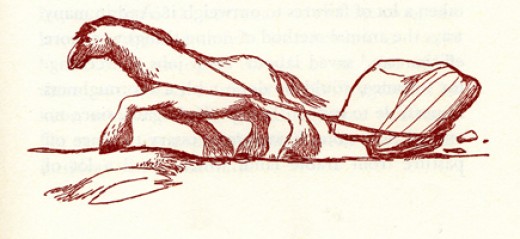
Boxer, the horse, is the figure of strength and symbolically the real leader of the animals.
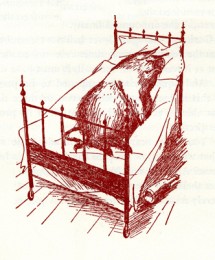
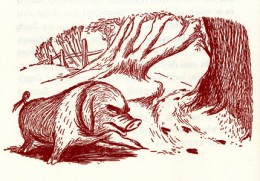
The pigs move into the farmer’s house and become little more than a replacement for “man”.
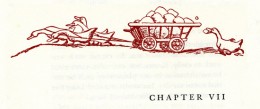
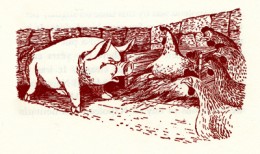
Many animals take the lead of Boxer and try to do their share, while the pigs fight for the lazy leadership.
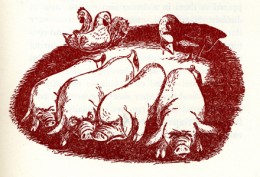

The pigs push Boxer to the limits and use the dogs as their personal guards and force their will on the others.
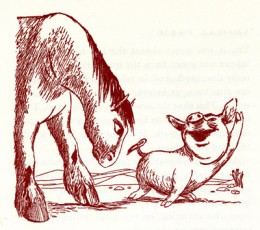
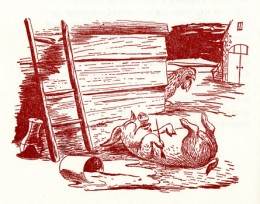
Boxer grows ill as the pigs grow lazier.
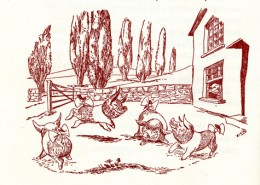
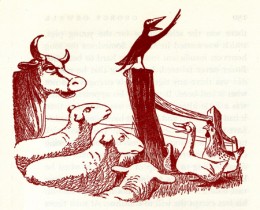
The lazy pigs celebrate their success. Animals hear gossip about the humans planning a charge to take back the farm.
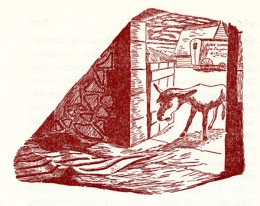
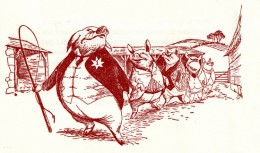
The weakened Boxer, no longer useful to the pigs, is sold for glue.
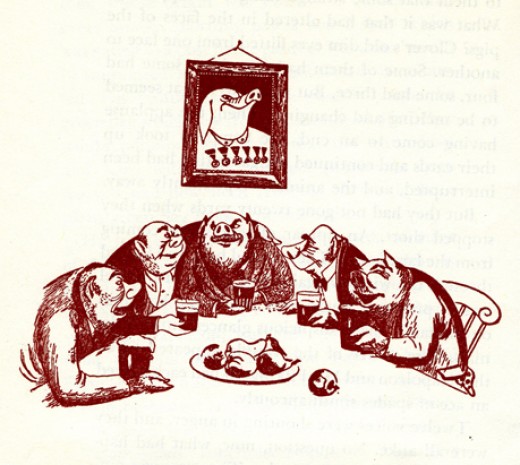
Eventually the humans return, and in some eyes of the animals they blend with the pigs.
The line illustrations do a nice job of representing the film. They’re also quite consistent.
You can watch Animal Farm on YouTube by going here.
Commentary 11 Mar 2013 02:09 am
European Animation
I know I’ve written about some of this stuff before (repeatedly), and I hope my take on it here is a bit different. At least I’m leading somewhere different, so please have a bit of patience with the opening.
- When I was a kid, animation was in the dark ages for the general public. By that, I mean there wasn’t a hell of a lot of material available to allow you to know how it was done or learn how to do it. There were maybe a dozen or so books available.
- -
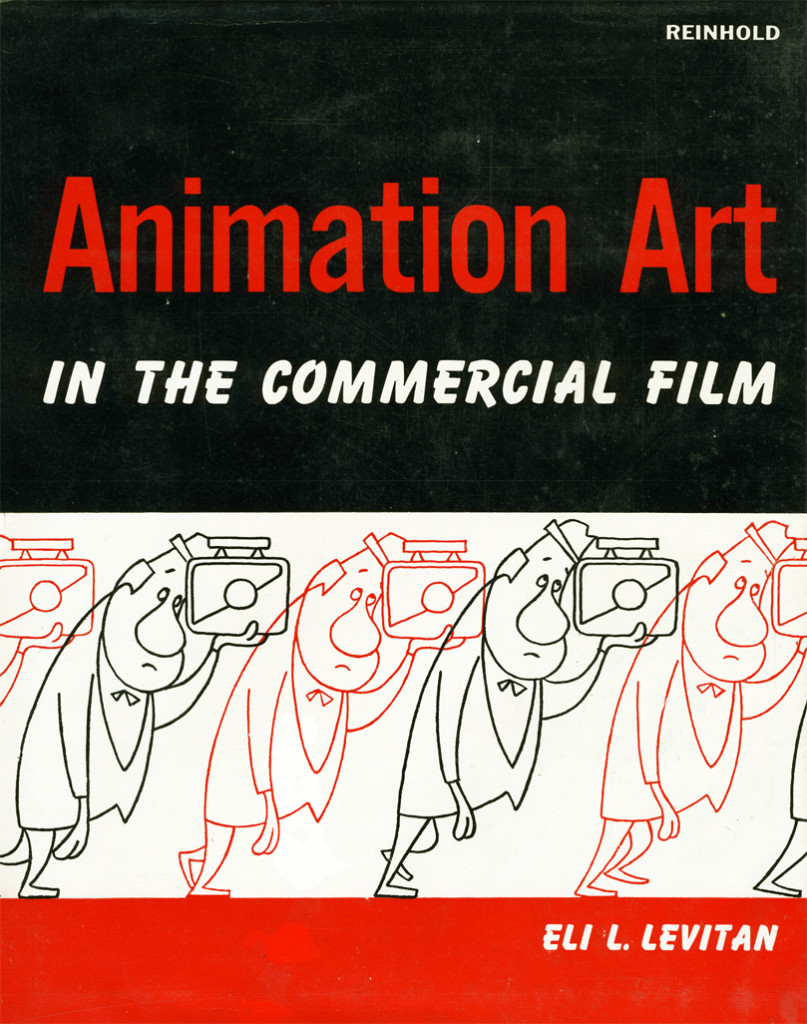 Of course the 40s Rob’t D. Feild book, The Art of Walt Disney. Some great information but not many illustrations. What are there are GREAT.
Of course the 40s Rob’t D. Feild book, The Art of Walt Disney. Some great information but not many illustrations. What are there are GREAT.
- The Preston Blair book, Animation, good and cheap. Very helpful for an amateur like me.
- Halas and Manvell‘s The Technique of Film Animation had more to do with animation as done in Europe, but it is extraordinarily helpful.
- Eli Levitan, an animation cameraman, had written several books. Animation Art in the Commercial Film is one of the better books.
There were a few others. My local library had them all, and I borrowed them endlessly and just about memorized them all. I owned the Preston Blair book (of course and my parents bought the brand new Bob Thomas Art of Animation for me Christmas 1958.
On ABC you had the Disneyland TV show which became The Wonderful World of Color when it moved to NBC. The Mighty Mouse Show was the staple on Saturday morning. Local channels featured Popeye and B&W Warner Bros cartoons.
I was completely intrigued with some silent cartoons that were run on the local ABC affiliate on early Saturday mornings. Every once in a while a sound Van Buren cartoon would pop up or a Harman-Ising MGM cartoon..
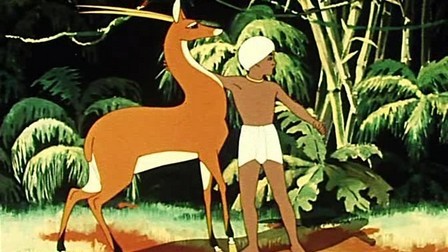 The show that also intrigued me was this horrible “Big Time Circus” starring Claude Kirschner (normally a VO announcer) as a ringmaster who talked to a $5 clown hand-puppet named “Clowny.” They showed cartoons, some B&W Terrytoons with Barker Bill and other early 30s things. They also showed a lot of foreign cartoons badly dubbed into English. They even had Russian features like The Golden Antelope serialized. They had a horrible title on the top of the film and a “The End” title pasted onto the end of the film. I used to tune in to see these B&W European and Russian cartoons. They moved so differently from what I was used to with the cartoons from the US. At 12, I could definitely see the difference and watched closely.
The show that also intrigued me was this horrible “Big Time Circus” starring Claude Kirschner (normally a VO announcer) as a ringmaster who talked to a $5 clown hand-puppet named “Clowny.” They showed cartoons, some B&W Terrytoons with Barker Bill and other early 30s things. They also showed a lot of foreign cartoons badly dubbed into English. They even had Russian features like The Golden Antelope serialized. They had a horrible title on the top of the film and a “The End” title pasted onto the end of the film. I used to tune in to see these B&W European and Russian cartoons. They moved so differently from what I was used to with the cartoons from the US. At 12, I could definitely see the difference and watched closely.
When I started collecting 16mm films I picked up a bunch of these shorts. The timing didn’t get any better.
On my second day at the Hubley Studio, I met the notorious Tissa David who dug into me quickly for my bad inbetweening. She offered to teach me after hours, which I certainly jumped to accept. In that first contact with her, I mentioned that I had a potential job offer from Richard Williams and I might go to England. She immediately said to me, “Oh, please don’t go there. Stay here. Only the Americans know how to animate properly.” After all those years of watching Russian and European cartoons, I understood what she was saying. (I was also working for my real hero, John Hubley, so I had no real plans to go anywhere.) Dick Williams came to me a couple of years later with Raggedy Ann. By then, I was knowledgeable enough to run the Asst. & Inbtwng dept – about 100-150 people.
But then Dick Williams was changing everything. He was teaching his people in England how to animate the way Disney people did it. He brought those people into his studio to teach: Art Babbitt, Ken Harris, John Hubley, Grim Natwick, and others. I believe Williams changed animation throughout Europe. Mind you, the problems of all those years of history is still there, but it’s enormously better.
What do I call “European Animation”? Well, it’s all about the timing. The characters often move at such an even speed that there is no sense of weight or real character movement. Basically, all characters move the same. The Golden Antelope is all rotoscoped, so the movement is on ones and all traced off the live action. You can tell when it’s not; there’s a sameness in the motion. It’s almost like there are no extremes just motion.
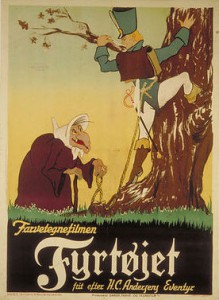 In Europe’s first attempt to imitate the US in a feature, The Tinderbox a 1946 film from Denmark, they were obviously trying to imitate the Fleischers of Gulliver’s Travels. Wild distortions and odd extremes but a lot of the evenly spaced timing. Consequently, with the distorted extremes moving in and out of position at an even pace, it’s doubly peculiar.
In Europe’s first attempt to imitate the US in a feature, The Tinderbox a 1946 film from Denmark, they were obviously trying to imitate the Fleischers of Gulliver’s Travels. Wild distortions and odd extremes but a lot of the evenly spaced timing. Consequently, with the distorted extremes moving in and out of position at an even pace, it’s doubly peculiar.
Halas and Batchelor‘s Animal Farm is so lethargic in its movement, it’s difficult to watch. However, whenever a Harold Whitaker scene pops up, it’s something to study. The guy was a fine animator. His work definitely sands out. He came from the Anson Dyer Studio, and had somehow learned to animate in the US methodology.
The Disney studio was having its effect , though as animators such as Borge Ring pretty much taught himself to go well beyond the basics of he European mold. He was close with a number of the Disney animators and studied Disney films religiously. His own personal style is definitely constructed from the US mold.
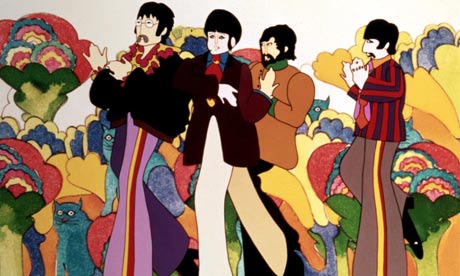 Even through The Yellow Submarine (1968), you see this flat style of animation. Of course, with the more graphic style of George Dunning‘s feature, the even pacing is better hidden in the mood of the piece.There’s also a lot of music that hides the timing problems.
Even through The Yellow Submarine (1968), you see this flat style of animation. Of course, with the more graphic style of George Dunning‘s feature, the even pacing is better hidden in the mood of the piece.There’s also a lot of music that hides the timing problems.
After Dick Williams, began his effort to alter the look of work coming out his studio, there was a big change in the look of work coming from all over Europe. Sure they slipped into and out of the old school of animation, but now they had learned from Art Babbitt and Ken Harris. (I wish they’d had more of Grim Natwick.) Take a look at the marvelous animation done for Bruno Bozzetto in the Ravel Bolero section of his 1977 feature, Allegro Non Troppo. To some extent, now, the best animation worldwide is coming out of England and France, especially from the younger animators.
So let’s take a look at the differences between the two styles..
- The best of the US style can be seen in those dwarfs in Snow White or the Siamese cat song in Lady & the Tramp or Scar in The Lion King. It’s all in the timing.
- The European style is very obvious in Jiri Trnka‘s 2D animation as in The Four Musicians Of Bremen or Spring-heeled Jack. You can see it in about half of Sylvain Chomet‘s The illusionist (the other half was wonderfully done US style), or, as I’ve already written, Animal Farm – the entire movie.
The US tradition came directly from the wonderful work done mostly after hours at Disney’s studio in the 30′s. They learned how to time animation for weight, for mood, for expression and for balance. Bill Tytla, Marc Davis and Frank Thomas were brilliant at it (though they all did it). The word reached outside the Disney studio and others came into the fold: Ken Harris and Bobe Cannon, Grim Natwick and Rod Scribner, Jack Schnerk and Abe Levitow, Hal Ambro and Tissa David. There are another couple of hundred people I could include if we were naming names. These people all mastered their timing. They knew what they were doing and did it as planned. The animation never does what IT wants to do, but it is controlled by the animator and his (her) timing.
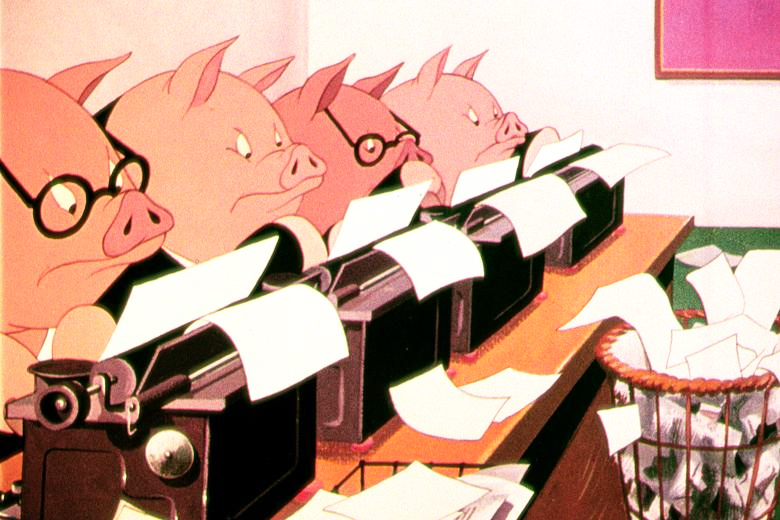 The European style is a very different animal. The timing is flat. It’s usually even paced and moves robotically forward, not always by going in a straight line. The weight is always soft; the emotion is almost nil. The drawings are often beautiful, but there’s no real strength behind that movement.
The European style is a very different animal. The timing is flat. It’s usually even paced and moves robotically forward, not always by going in a straight line. The weight is always soft; the emotion is almost nil. The drawings are often beautiful, but there’s no real strength behind that movement.
Things have changed quite a bit since the advent of Richard Williams and his work, but even there I see it at times. In Dick’s work, I mean, I sometimes see it. (Not surprising since I infrequently see it in Art Babbitt‘s animation. – and lest you think I’m biased, I often see it in my own work and have to rework it. (I’m not trying to hurt anyone here, I’m just reporting what I sense and see and feel.) Just talkin’ animation here. It’s basic and can so easily be bypassed. Animation is ALL ABOUT the timing. Norm Ferguson couldn’t draw very well at all, but he was one of the GREAT animators of all time. There was no even-paced timing in his makeup; the same has to be said of Tytla or Grim Natwick. Babbitt did do it. He was one of our great animators, but he infrequently paced his work in a very dull way. I could give you examples, but I won’t look for yourself, because when he’s good, he’s brilliant. Take the scene he did in The Thief and the Cobbler where the evil Vizier, Zig Zag, shuffles the playing cards.
A great example of what I’m talking about has all to do with Tom & Jerry. Take a look at some of those produced by Gene Deitch out of Czecheslovakia in the early 60s. Don’t compare this with the fully-animated shorts produced by Hanna & Barbera at MGM. No, compare it to the films done by Jack Kinney using a pickup studio. Most of the staff was free lance California employees. Turks without a space to work in the studio. Those Kinney films, badly animated though they are, are pure US-styled animation. The Deitch films are equally, poorly animated, but these also are animated with a European staff that animated the way a European would. The timing is rigidly even in its pacing.
You often get that European feel in the cgi work done today.
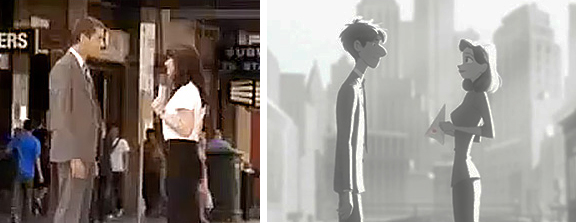
I can’t tell you how many times I’ve seen scenes where things suddenly go slack and move, seemingly, of their own accord in cg films. Perhaps the two arms will complete a motion that was started by an animator, and (s)he will allow the rest of the motion continue on its own to a final rest stop. It’s not animation anymore, it’s just a completion. I do quite dislike this when and if I see it. (Thought, admittedly, too often I’m not paying attention enough.) There’s a scene somewhere in Paperman where the male, standing in profile, has his two arms moving forward to a rest. They move at exactly the same speed, doing exactly the same thing, and it bothers me. Tissa certainly would have scolded me for allowing such a move to happen. I have to hope and believe that that’s what the animator wanted.
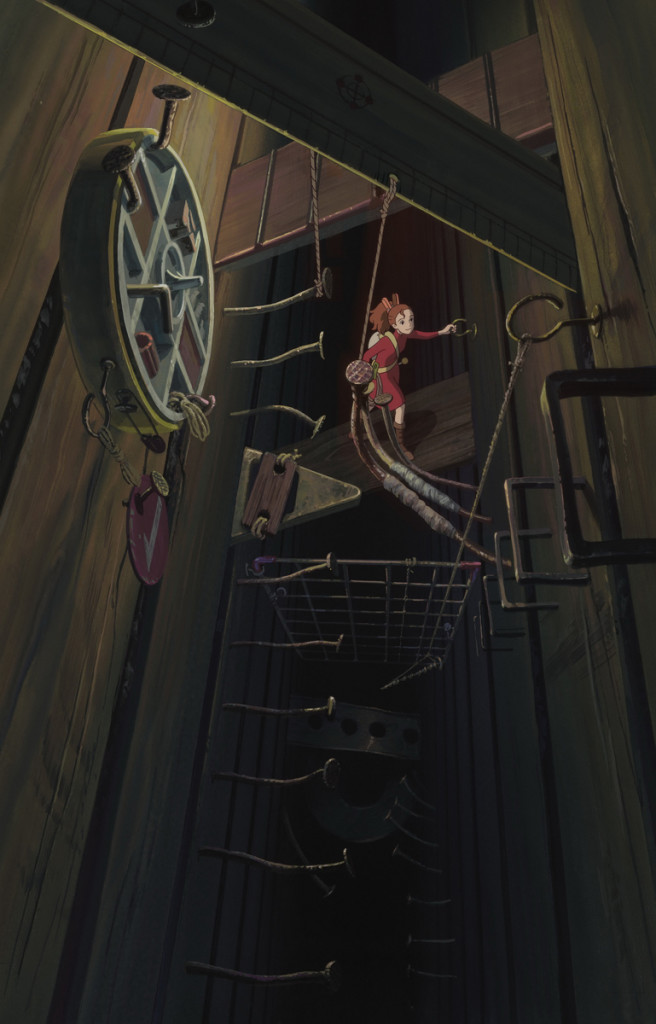 I had actually intended to keep going. One can’t really just say US and European animation styles. After all, there’s also the work out of Asia. The Japanese market, of course, is very different than the rest, and, thanks to what Miyazaki has been doing and his success in doing it, things are changing radically. Where he once blended in with the Anime animation that was all present, things are now changing to more of an emotional, Western appeal. My Neighbor Totoro started something, that changed wildly when he did Spirited Away and Ponyo. When I saw The Secret World of Arrietty, I knew things had changed completely. There was real character animation on the screen. One character was different from the next, and a lot of it had to do with the movement.
I had actually intended to keep going. One can’t really just say US and European animation styles. After all, there’s also the work out of Asia. The Japanese market, of course, is very different than the rest, and, thanks to what Miyazaki has been doing and his success in doing it, things are changing radically. Where he once blended in with the Anime animation that was all present, things are now changing to more of an emotional, Western appeal. My Neighbor Totoro started something, that changed wildly when he did Spirited Away and Ponyo. When I saw The Secret World of Arrietty, I knew things had changed completely. There was real character animation on the screen. One character was different from the next, and a lot of it had to do with the movement.
I was also fascinated with the work of Satoshi Kon, before his untimely death. His work was growing enormously with each and every film. The movies he made were adult in every sense of the word, and they were beautifully constructed, drawn and animated. I still go back to watch copies of his films. ________“Arrietty”
I was going to write about Katsuhiro Ôtomo, but I realize I’ve taken a sidestep. These are directors, and this article is about animators. In short, there is an Eastern style, and I’m glad to see that because of a couple of directors, they’re doing thier own take on the US version of animation character developement. It’s good to see it happening.
Essentially, the world is becoming smaller. Global animation styles are settling in, and I hope there will be a 2D animation so that the job can be complete in a few more years.
Animation Artifacts &Articles on Animation 08 May 2012 04:00 am
Halas in Films In Review – 1969
.
.
.
.
.- John Halas was certainly a great promoter of animation. And while doing this he also promoted himself. A very prolific writer in a time when animation was rarely mentoned, even in film magazines.
Chris Rushworth, whose site built around his collection of art from the Halas & Batchelor feature, Animal Farm, has sent me this article from Films In Review, 1969. (I used to buy this magazine, loyally, as a child for the reviews and articles about soundtrack music.)
Anyway, I thought it’d be fun to post the old article (which is obviously, pre-computer. As a matter of fact, pre video.)
.
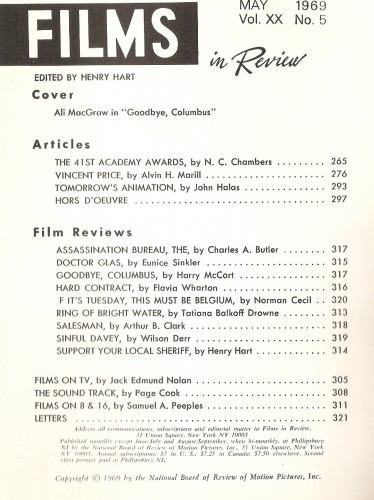
Magazine Index
Commentary &SpornFilms 21 Jan 2012 06:48 am
The Week in Revue
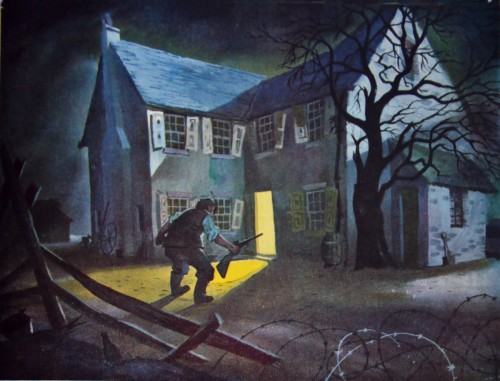 - I must say I was happy with a couple of the posts this past week. The John Wilson piece on Monday can only be bettered by this coming Monday’s piece on Irma La Douce. On Tuesday, the 1953 magazine article on Geoffrey Martin‘s designs for Animal Farm made for an excellent piece. Many thanks to Chris Rushworth for that. I also have wanted to combine all four of the walk cycles from 101 Dalmatians and have thought about it for over a year. I’m glad I finally got around to doing it. And, naturally, the fine posts from Bill Peckmann‘s collection rounded out the week. So, in all, I was pleased with what I got to post. Sorry to boast, just thinking aloud. It’s day to day here, so I’m often surprised with what shows up.
- I must say I was happy with a couple of the posts this past week. The John Wilson piece on Monday can only be bettered by this coming Monday’s piece on Irma La Douce. On Tuesday, the 1953 magazine article on Geoffrey Martin‘s designs for Animal Farm made for an excellent piece. Many thanks to Chris Rushworth for that. I also have wanted to combine all four of the walk cycles from 101 Dalmatians and have thought about it for over a year. I’m glad I finally got around to doing it. And, naturally, the fine posts from Bill Peckmann‘s collection rounded out the week. So, in all, I was pleased with what I got to post. Sorry to boast, just thinking aloud. It’s day to day here, so I’m often surprised with what shows up.
BAFTAs
The BAFTA nominations were revealed on Tuesday morning. The award for Best Animated Short includes the following three nominees:
Abuelas (Grandmothers) by Afarin Eghbal, Kasia Malipan & Francesca Gardiner is a mixed-media short.
Bobby Yeah by Robert Morgan is a stop motion animation film that looks like it came out of the hands of David Lynch.
A Morning Stroll by Grant Orchard & Sue Goffe is a film that’s been out there for a bit, seen at many film festivals and on the Oscar short list. (This is the film I like most.)
Congratulations to all the film makers.
The BAFTA nominees for Animated Feature include: TINTIN, ARTHUR CHRISTMAS and RANGO. Let’s hope for RANGO to win, but I expect the Brits to give it to ARTHUR CHRISTMAS. (Please, not TINTIN!)
NAACP Nomination
- Speaking of nominations, I learned on Thursday that I was nominated for an NAACP Image Award for Outstanding Children’s Program. My show, I CAN BE PRESIDENT, was nominated. This is big for me, and I’d love to win it.The show had such a low budget and was such a problematic schedule that it was a terror to get through production. I’m pleased it came out so well. Congratulations also to the guys that helped make it: Matt Clinton, Katrina Gregorius, and Christine O’Neill.
Outstanding Children’s Program
A.N.T. Farm – Disney Channel
Dora the Explorer – Nickelodeon
Go, Diego! Go! – Nickelodeon
I Can Be President: A Kid’s-Eye View – HBO
My Family Tree – Disney Channel
Mars Needs Moms
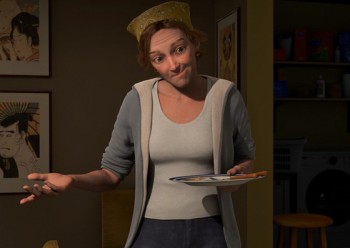 - The Oscar watch was down to the last (and I do mean the last) animated feature. MARS NEEDS MOMS was better than Hoodwinked and Chipwrecked, and I also think it was better than TINTIN – another MoCap film. Simon Wells directed MARS, and his work is reliably stable. (He directed PRINCE OF EGYPT, BALTO and WE”RE BACK.) He and Wendy Wells also wrote the script from Berkeley Breathed’s book. Like TINTIN, the film had a breakneck pace, but unlike TINTIN it didn’t ignore some of the basic rules of cinema. No annoying swooping spins around the characters, with an endlessly moving camera; it also didn’t feature lots of busy work (as if to prove it was animated)l nor did it have a breathless pace (as if to create Action! Adventure! and Tedium!). No, unlike TINTIN, MARS NEEDS MOMS was more craftily observant of the audience’s reaction. It knew when to stop the action, then go back to the danger. It knew when to add humor instead of just running, running, running.
- The Oscar watch was down to the last (and I do mean the last) animated feature. MARS NEEDS MOMS was better than Hoodwinked and Chipwrecked, and I also think it was better than TINTIN – another MoCap film. Simon Wells directed MARS, and his work is reliably stable. (He directed PRINCE OF EGYPT, BALTO and WE”RE BACK.) He and Wendy Wells also wrote the script from Berkeley Breathed’s book. Like TINTIN, the film had a breakneck pace, but unlike TINTIN it didn’t ignore some of the basic rules of cinema. No annoying swooping spins around the characters, with an endlessly moving camera; it also didn’t feature lots of busy work (as if to prove it was animated)l nor did it have a breathless pace (as if to create Action! Adventure! and Tedium!). No, unlike TINTIN, MARS NEEDS MOMS was more craftily observant of the audience’s reaction. It knew when to stop the action, then go back to the danger. It knew when to add humor instead of just running, running, running.
However, like TINTIN the dead eyes were hard to get into, and the graphics were horrible to look at. Sure, it’s MoCap and tied to the live action, but does it have to have a faux-realistic look to it? Couldn’t it have been more cartoon? (Couldn’t TINTIN have been flattened to look like the comic strip, despite the MoCap?) The lead boy looked to have 5 o’clock shadow on his face in all the scenes on Earth.
The filmmakers want it to be called animation, but under the end credits they include footage of all the live actors doing key lines and being shot with all the tennis balls and helmets. Maybe it should have been live action with just the martians and sets done with MoCap. The film didn’t work, but it worked better than the Spielberg’s animation effort, TINTIN. Unfortunately, it won’t get an Oscar nomination or a Golden GLobe, like TINTIN. Neither film deserves one.
In voting for this award, I sat through:
PUSS IN BOOTS,
CARS 2,
RIO,
WINNIE THE POOH,
TINTIN,
HOODWINKED TWO,
HAPPY FEET 2,
RANGO,
ALVIN & THE CHIPMUNKS: CHIPWRECKED,
WRINKLES,
A CAT IN PARIS,
CHICO & RITA,
ARTHUR CHRISTMAS,
KUNG FU PANDA 2,
ALOIS NEBEL,
GNOMEO & JULIET and
MARS NEEDS MOMS.
The only one I couldn’t sit through to the end was HOODWINKED.
It was worth it to see CHICO & RITA, A CAT IN PARIS and even WRINKLES.
I also didn’t mind RANGO, KUNG FU PANDA and HAPPY FEET 2.
None of them compared to Sylvain Chomet’s THE ILLUSIONIST.
Gene & Zdenka
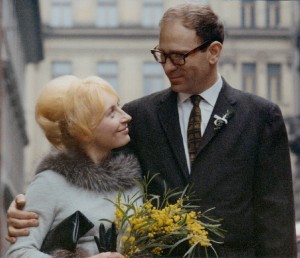 - Gene Deitch has added two pieces to his blog, his first arrival in Czechoslovakia being met by “Lulka” the emissary from the Czech studio. Then the second post details the meeting with Zdenka, who soon became the love of his life and his wife.
- Gene Deitch has added two pieces to his blog, his first arrival in Czechoslovakia being met by “Lulka” the emissary from the Czech studio. Then the second post details the meeting with Zdenka, who soon became the love of his life and his wife.
They’re both warm and wonderful reads.
The surprise and the gem of the Zdenka piece is a long video (scroll all the way down) which gives the history of their studio and their relationship. It’s quite a sweet film that’s well worth watching to see if only to see what changes the animated studio has undergone in the years that Mr. Deitch has been in charge. You also get to feel more at home with this great animation director and almost feel as though you know him by the end of it. It’s a really good piece that I don’t think you’ll regret viewing. (I was surprised at how quickly the one hour video downloaded.)
- John Dilworth reported this week that his last film, Bunny Bashing, is now available on YouTube. So I’ve embedded it, above.
And here’s an interesting use of animation in this video designed to
inform Liberals why they shouldn’t despair over the work by Obama –
which, in fact, is remarkably good despite the unyielding criticism
from the Left and the Right.
Found on Andrew Sullivan’s site, The Daily Beast.
Articles on Animation &Independent Animation &Layout & Design 17 Jan 2012 07:00 am
Designing Animal Farm
Chris Rushworth, whose site AnimalFarmWorld, is dedicated to the collection of material about and from the Halas & Batchelor feature animated film, Animal Farm, has sent me an article he’s found and which I thought extraordinarily interesting. It’s from a UK publication called “Art & Industry” dated September 1953.
Since there were difficulties with the scans, I had to retype the article so it could be legible and I played with the images in photoshop trying to bring some clarity to the sketches. I think they work well enough for this posting.
Geoffrey Martin, a senior member of the design team of the
Halas & Batchelor Cartoon Studios, describes his work on the production
of George Orwell’s ANIMAL FARM as a full-length feature cartoon film.
The painter and the film and stage designer work with similar motives but from varying standpoints. One one hand, the painter needs only to justify himself, while on the other, the work of the designer must fit within the framework of another man’s concept. The painter is more or less free to stand apart, and need not e called upon to explain his motives or analyze his emotions. The designer, to achieve his ends is dependent on others, and must therefore rationalize and be able to explain every nuance of his work in order to amplify the trends and emotions in a story and convey them to an audience.
The principles of designing a cartoon film are little different from those involved in a live-action film, With the obvious difference of the medium and its flat dimension, the other elements involved derive purely from the mechanics of animation. Both films set out to tell a story, to corner an idea, and to induce a reaction from the audience.
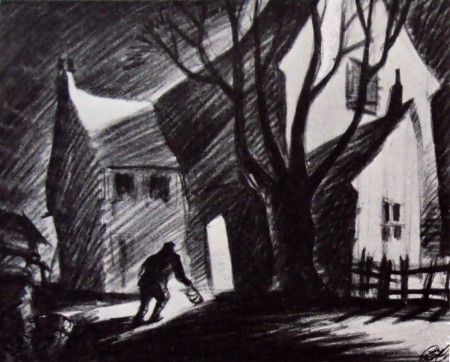
One of Geoffrey Martin’s rough atmosphere sketches
embodying his conception of the farm in relation to the story
in which the animals revolt and dispossess the farmer. The
mood of Orwell’s political satire is excellently captured in this scene.
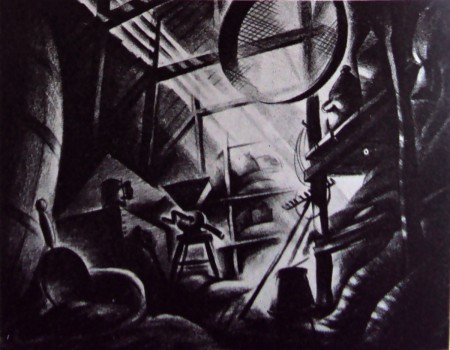
This sketch shows a corner in the farm’s food store
and was created to suggest possible props.
The cartoon designer is, if anything, more directly concerned with, and responsible for, the graphic impression on the screen than the art director in a live-action studio. To him falls the choice of angle of every sot and the responsibility of ensuring that the angle cuts smoothly to another, while constantly preserving the audience’s sense of time and place.
Once having designed and built his settings, the art director on the live-action film is largely in the hands of the director and his lighting cameraman; on these people depends how much of his original attempt is retained in the finished film. It is in this respect that the cartoon set designer is more fortunate; he has much more control over his medium, and is able to assess the result of his work more immediately by seeing the designs in actual use soon after leaving his drawing-board.

Above: The final interpretation of the scene shown opposite
painted by Matvyn Wright, principal background artist on the
production. Colour heightens the dramatic impact of the scene.
Until comparatively recent years, cartoon films were more or less and American monoply, but just ten years ago John Halas and his wife, Joy Batchelor, set up in London what is to-day the largest cartoon production group in Europe. Wisely, perhaps, they never attempted to emulate the exuberant style of M.G.M.’s ‘Tom and Jerry’ and others who work in similar vein, and as far as the feature field was concerned, Walt Disney, with his lavish and technically superb productions, reigned supreme. Instead, the concentrated on an entertaining series of educational and sponsored subjects with a definite adult flavour.
In late 1951, American producer Louis de Rochemont (‘The House on 92nd Street,’ ‘Boomerang,’ and ‘The March of Time’ series) asked the Halas and Batchelor studios to prepare an animated version of George Orwell’s sharp-edged political satire, Animal Farm. De Rochemont felt the studios to possess a style markedly different from their American counterparts – a style eminently suited, moreover, to what was, to all intents and purposes, a paradox, a ‘serious’ cartoon.

Above: Winter landscape. The half completed windmill
and the farmhouse are shown in this sketch suggesting
the starkness and economy of the settings.
When the studios first embarked on the subject, I was, as a designer, faced with many new problems. For although I possessed considerable experience of short films, Animal Farm was the first feature cartoon to be produced in this country and in length alone, was something completely new to me.
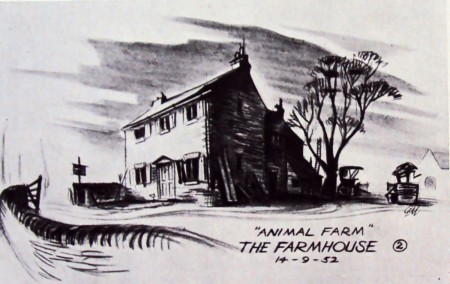
A first attempt to specify the
general style of the farmhouse.
After discussing the story with John Halas and Joy Batchelor, I made a considerable number of atmosphere sketches and rough plans. In these, I attempted to embody our many ideas regarding the conception of the farm in relation to the story.
On reading the book, I had been impressed by the windswept starkness of the farm-qualities contrasting strongly with the warm normality of the local Inn and the village, representing the outside world. We decided that the coulour would eventually go a long way towards emphasizing the contrast between those two main locations.
Since much of the designer’s work is dependent on other departments, I feel that at this point it would be well to describe the production processes of a cartoon studio. Firstly, a word here about animation, itself. In the layman’s view the animator merely ‘makes the characters move’. He does more than that, in effect, he is the very ‘life’ of the film. To make a character move does one thing, but to invest him with the spark of life and a distinct personality is a major achievement, and an element nowadays too often taken for granted.
Audiences have become accustomed to such miracles. Without character there can be no story; the characters within a play are the play. A cartoon film needs a gifted team of animators to bring life and conviction to the characters, and on their work it stands or falls.
To return to actual production, however, the story is broken down into convenient sequences to facilitate handling. In Animal Farm, we have 18 sequences, varying between three and four minutes of screen time each; this represents some 6,400 feet of film in all.
The animation director, who is to the cartoon what the choreographer is to the dance, must then time the action of each scene with stopwatch and metronome. The entire action is planned against a musical score, and to various tempi: so many bars per minute and hence per foot of film.
It is here that the designer enters the picture again. He must work to present the action the director has visualized in the most direct way possible. His department must produce the layout of each scene and the finished drawings of the settings – including sketches of the characters and their size in relation to their settings and notations as to camera movements within the scene.
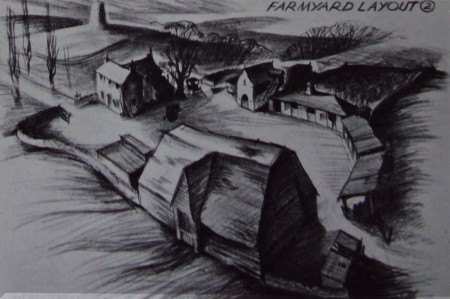
A panoramic view of the farm – used to establish
the relationship of the outbuildings to the farmhouse.
Sets of the drawings are then passed to the animation team responsible for the sequence. On completion of the work, a test shot is made of their rough drawings.
This test is checked and corrected to refine and smooth out the action. I no drastic alterations are required, the layout drawings are passed to the background department who render them in colour. The animation is traced on to sheets of celluloid and coloured with opaque paint, and the characters on the ‘cells’ are finally united with their appropriate backgrounds under the Technicolor camera.
In planning the finished layout of each scene and staging each individual piece of action, we sometimes found that perhaps the story-line demanded a change in the location of a basic set. Having solved such a problem quite happily, we might then have to rearrange our set as it was originally a demand imposed, perhaps by a later sequence.
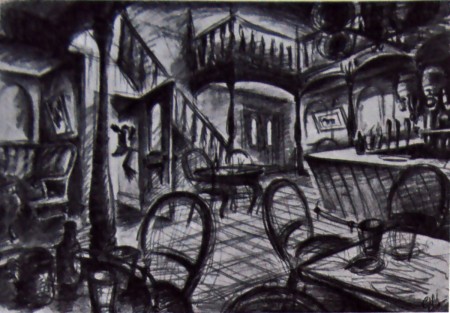
Tentative design for the interior of the village inn.
There is, in fact, a period in every cartoon film when the settings are in a continual state of change and compromise. The designer must bear in mind all the miscellaneous action which takes place in any given location throughout the film and work with this in mind.
The live-action film director is at an advantage in that once his sets are built, the are constant. He can modifu his ideas about camera angles as he goes along. But for us, any slight change of angle withina setting means a new drawing and it is quite possible to accumulate ten or fifteen layouts featuring the same doorway from various angles -made simply in order to stage differing pieces of action.
Such a process involves problems of continuity, for in each drawing ever stone and subtlety of texture must be identical from each angle. Inevitably, it becomes necessary to simplify in order to reduce the amount of work in reproducing every detail; pet ideas are swept away, and like any artist, one is sometimes reluctant to change what one feels to be an eminently satisfactory piece of design. But hard as this may be, there s the final satisfaction of knowing that one’s sets are completely workable.
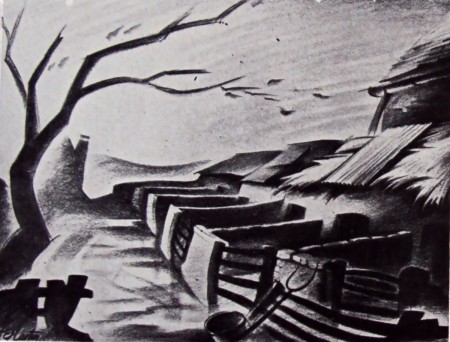
Another atmosphere sketch depicting
the general appearance of the pigstys.
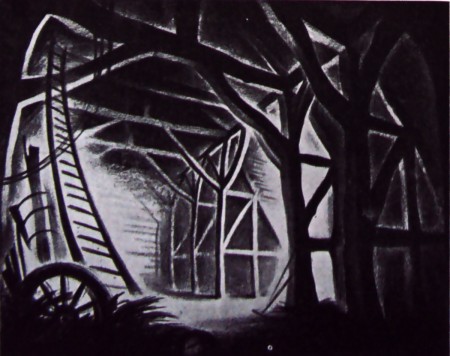
Interior of the great barn, the mise-en-scène
for the planning of the revolution.
Adaptability is, I feel, the first requisite of any setting, whether for stage, film or cartoon. Admittedly, it must carry the fight amount of atmospheric quality, but this must never hamper or dominate the actors – it is essentially a mounting, yet strong enough to be felt by the audience.
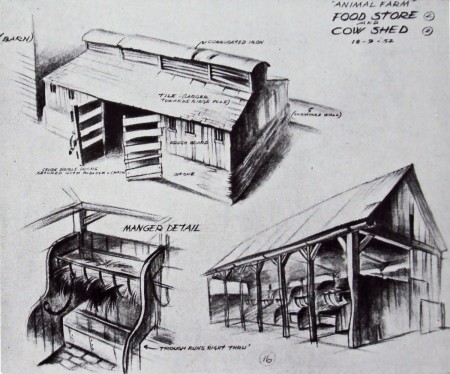
Designs establishing the appearance of farm outbuildings
and a detail of one of the mangers.
One of the main problems of designing for Animal Farm has been that the action takes place over a period of years. We have been faced with the problem of reproducing the same settings time and time again – sometimes in bright sunshine, and sometimes, in the depth of winter. It is here that the designer depends very greatly on the background department, and in Matvyn Wright, the principal background artist ont he production, we have been very fortunate. He has a reat feeling for mood and overal texture – qualities with which each of his paintings is invested. It is ovious, of course, that the background painters can make or mar the designer’s work; the effects striven for can be over-stated or lost completely. As an artist he is in the unenviable position of having to work on second-hand ideas. The initial conception is not his, only the interpretation. So often our first rough sketches have a life and excitement that is hard to reproduce.
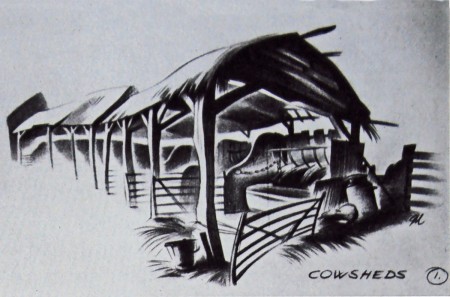
Sketch finalising the type of structure used for housing the cows.
The reader may now begin to understand that the cartoon studio is a closely integrated unit. It is, in fact, an essentially co-operative art. Although each and every person working on the production is an artist in his own right, we are all, to greater or lesser extent, interpreters, each of us contributing towards the achievement of a common idea.
The designer is dependent on a basic idea, and depends yet again on others to finalize his own individual contributions. The designer depends on the background artist; the animator depends on his assistants to refine his rough drawings, and the people who trace and colour his work. No one thing appearing on the screen can truly be claimed as any artist’s sole property, since we all of us have had a hand in it to a greater or lesser degree. The original conception came from George Orwell’s story – we have interpreted his ideas to the best of our several abilities. The final assessment of the studio’s work rests, as always, with the public.
.
Thanks, again, to Chris Rushworth for passing this article on.
I wasn’t even aware of its existence, but find it quite valuable.
.
Frame Grabs &Independent Animation 31 Oct 2011 06:59 am
The Hill Farm – 1
- The Hill Farm is one of my favorite films. It was a school project for Mark Baker who burst on the animation scene with this first film. It ended up being the first of three Oscar nominations he’d receive. His second (The Village) and third (Jolly Roger) shorts were also nominated.
He has since formed his own commercial animation studio with Neville Astley, and they were ultimately joined by Phil Davies to form Astley, Baker, Davies. They are jointly responsible for three television series: Peppa Pig, The Big Knights and Ben and Holly’s Little Kingdom.
The story of The Hill Farm takes place over three days and shows how the same landscape affects three different sets of people: farmers, campers and hunters. The graphics are beautifully designed and are obviously inspired by a period of Paul Klee’s art. Julian Nott’s score this film, and for all of Baker’s shorts, is just excellent; it couldn’t be better.
The DVD for The Hill Farm can be bought from AWN; it’s packaged with “Gopher Broke” and Plympton’s “Fan and the Flower”.
Here are frame grabs from the first half of the film.
The Farmers:
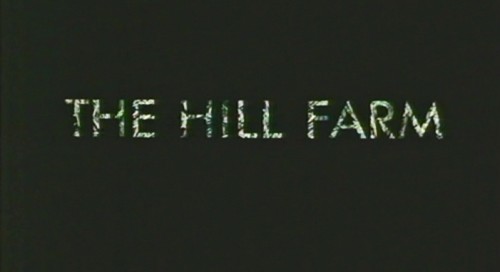 1
1.
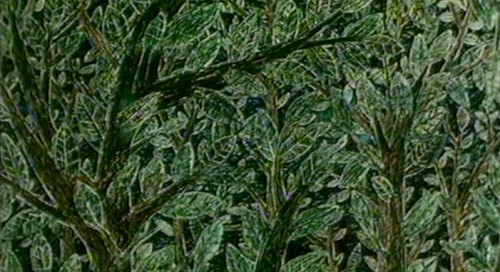 2
2.
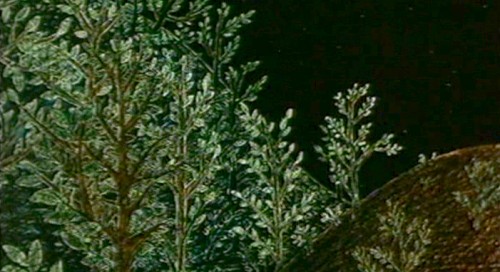 3
3The film shows a remarkable sense of professionalism
and knowledge given that it was a student film.
.
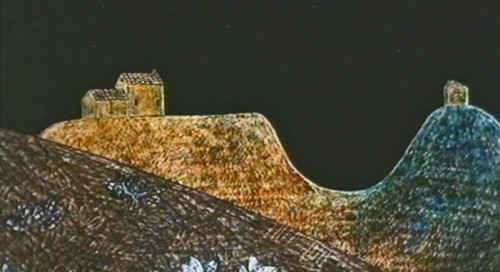 4
4.
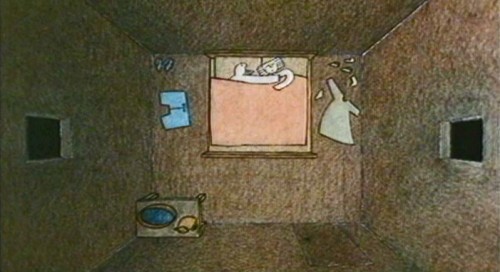 5
5.
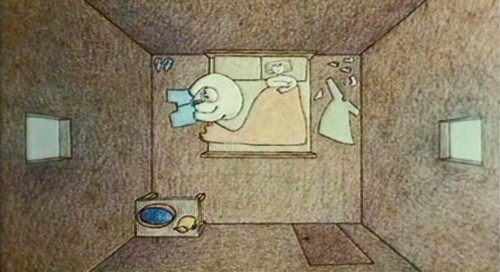 6
6Time was taken to develop each character in the film.
.
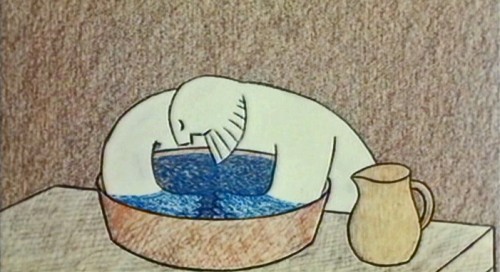 7
7.
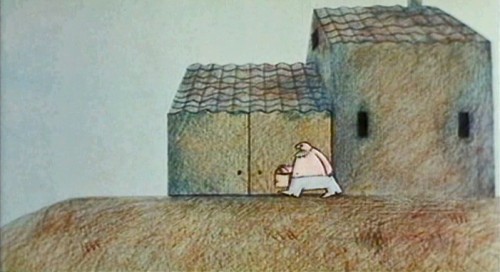 8
8.
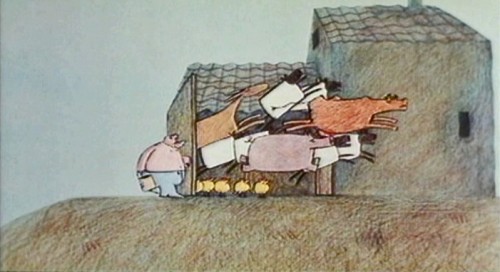 9
9.
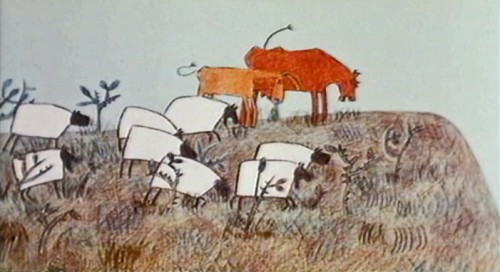 10
10The animals also take on a character.
.
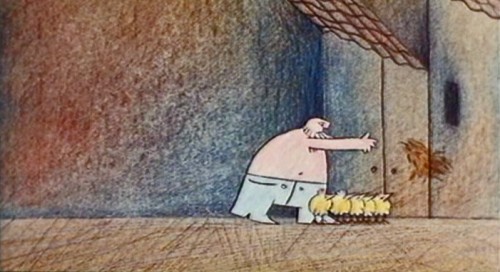 11
11.
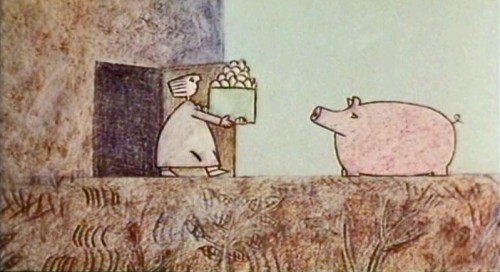 12
12.
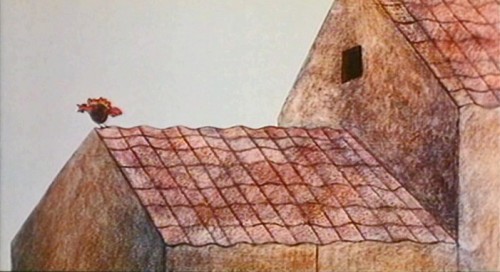 13
13.
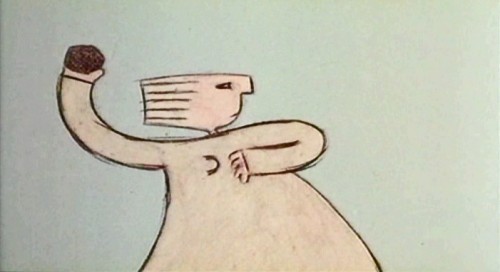 14
14.
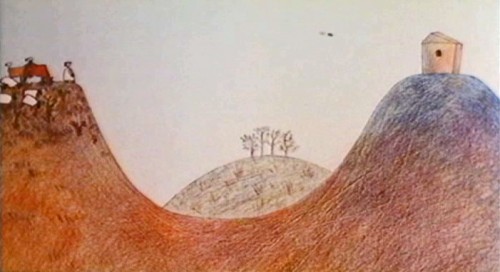 15
15Mom wakes up Junior – or is it a farm hand?
.
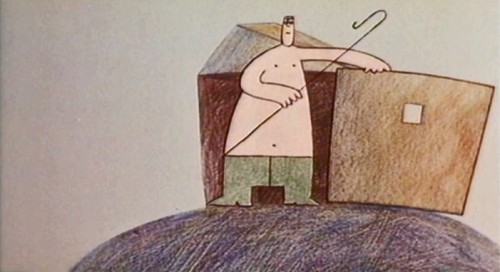 16
16.
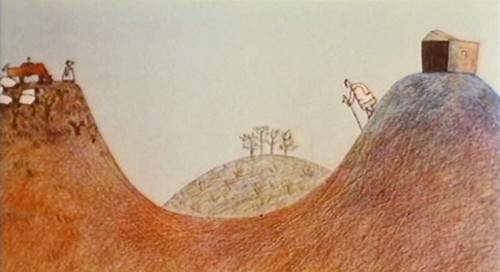 17
17.
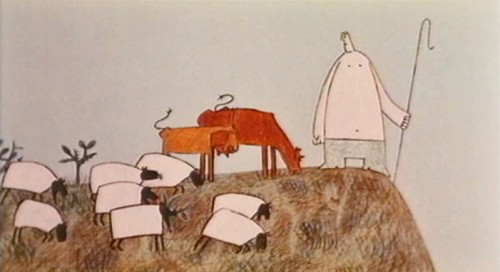 18
18.
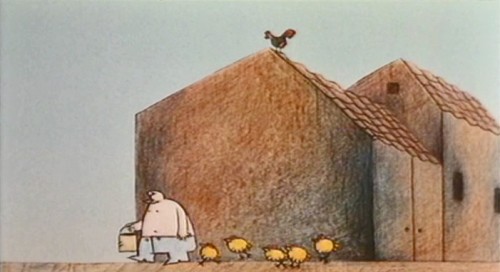 19
19.
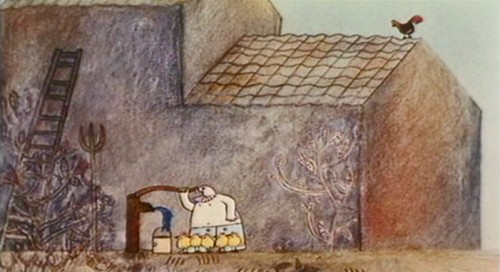 20
20.
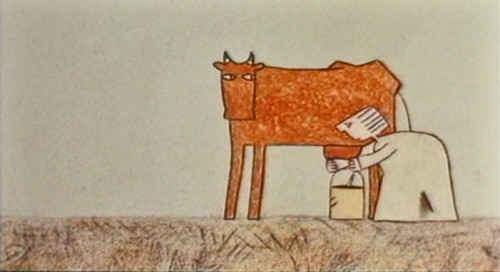 21
21.
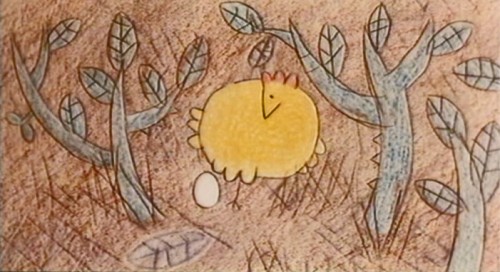 22
22.
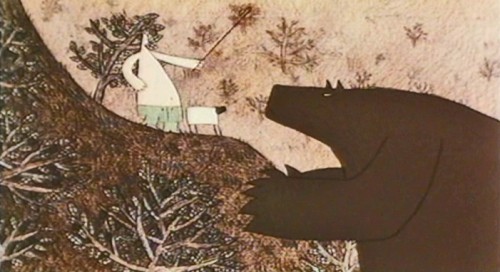 23
23Junior seems to have some recurring relationship with the bear
who has threatened to eat the sheep.
.
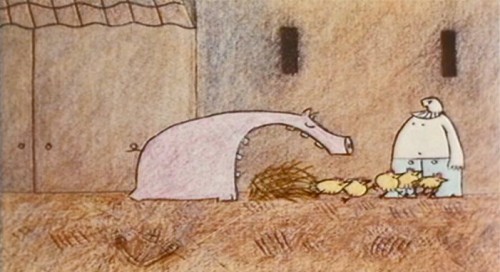 24
24The pig has his character . . .
.
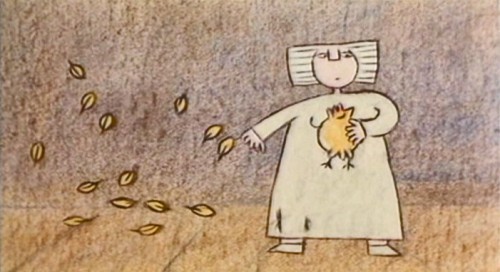 25
25. . . while the funny and cute chickens are obviously meant for killing.
This gives meaning to all the animals on the farm – as is natural.
.
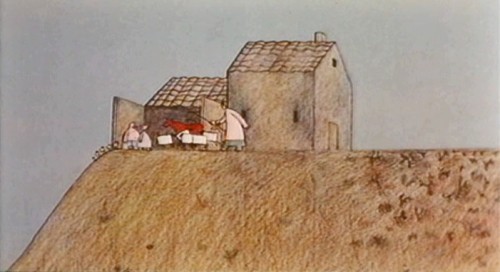 26
26And they are the prime concern of the farmer.
.
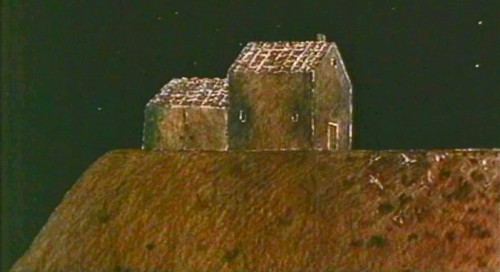 27
27.
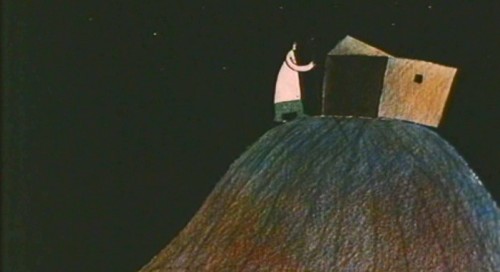 28
28.
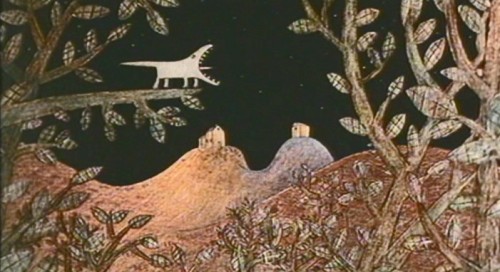 29
29We are reminded that there are also animals in the wild
other than the threatening bear.
.
Here is a contrasty version on YouTube with some distortion in parts. Part1, Part 2
Commentary 02 Apr 2011 08:23 am
Dilworth and 100 Features and Thursday
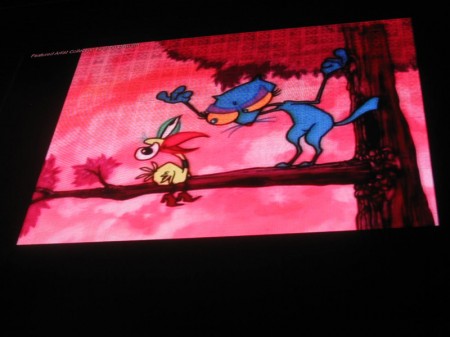
The Dirty Birdy
- Last night was John Dilworth night at the Big Screen Project. As you can see from the above photo, this is a 30 foot video screen plunked mid block off Sixth Avenue between 29th & 30th Streets. John invited lots of friends for the two screenings. Unfortunately, the weather didn’t cooperate, and we had a cool, windy, rainy night.
The event, however, wasn’t spoiled because there was an enclosure into the building, and we were able to look out at the monitor. They hand out closed circuit radios (with earplugs – you take home with you) to hear the sound track (in stereo) while watching from the warm comfort of the building. It’s a food court so there’s plenty of food to purchase or you can have a drink, since the area we watched from was a pub. It made for a fun and interesting experience.
The program was well organized and coordinated by Jaime Ekkens for Big Screen Project.
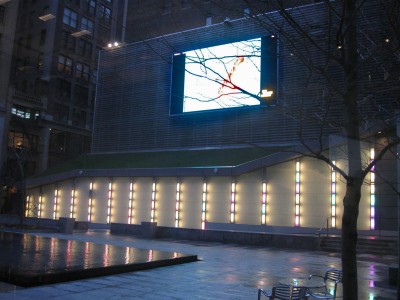
Looking out to the screen from the bar.
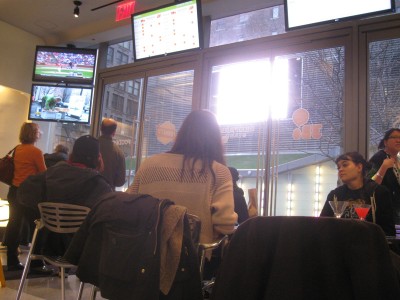
The films absolutely seemed to glow on the crystal clear monitor.
There are plenty of other animators up this April to showcase their films. Go here to see the April schedule. Emily Hubley‘s films are up next on April 11th.
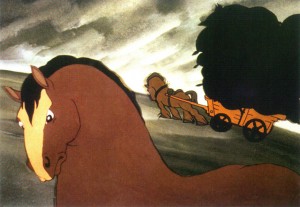 - This past week I received a book in the mail, 100 Animated Feature Films. When the book arrived, I was so taken by the cover design (an image from Lotte Reiniger‘s Prince Achmed, the first full length animated feature) that I immediately opened and started into the book.
- This past week I received a book in the mail, 100 Animated Feature Films. When the book arrived, I was so taken by the cover design (an image from Lotte Reiniger‘s Prince Achmed, the first full length animated feature) that I immediately opened and started into the book.
I was curious about the taste of the author, Andrew Osmond. Would it be another list that would be more studio oriented or more, perhaps, something a bit more siding with the Independent studio. Would his taste run more to the current films or the Golden Age? He’s written a number of articles about Satoshi Kon and Miyazaki for Britain’s The Guardian, so one has a good idea of his preferences.
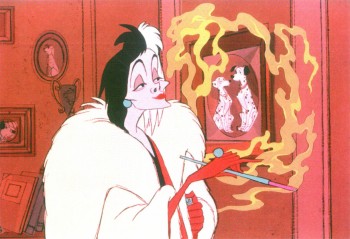 In fact, I found myself pretty well pleased with a lot of the listings. It’s a bit more Anime than I would have gone toward, but I can easily understand the choice. However, there are many expected and deserved choices within the book. I’m glad to see Reininger’s Prince Achmed listed, as, of course, is Snow White. Other Disney titles include: Pinocchio, Bambi, Fantasia, Dumbo, Beauty and the Beast. There are also a bunch of Pixar films, some of which are: only one Toy Story (the original), The Incredibles, Monsters Inc., Finding Nemo and Up.
In fact, I found myself pretty well pleased with a lot of the listings. It’s a bit more Anime than I would have gone toward, but I can easily understand the choice. However, there are many expected and deserved choices within the book. I’m glad to see Reininger’s Prince Achmed listed, as, of course, is Snow White. Other Disney titles include: Pinocchio, Bambi, Fantasia, Dumbo, Beauty and the Beast. There are also a bunch of Pixar films, some of which are: only one Toy Story (the original), The Incredibles, Monsters Inc., Finding Nemo and Up.
Surprises were finding some titles such as:
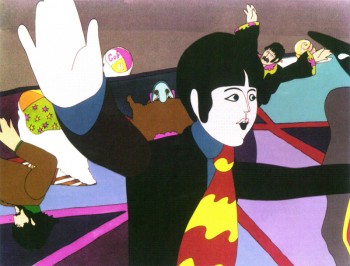 The Thief and the Cobbler. The final film version of Richard Williams’ feature, on the market, is horrible. The one in the works for 30 years was visually stunning. This is listed here for what it might have been.
The Thief and the Cobbler. The final film version of Richard Williams’ feature, on the market, is horrible. The one in the works for 30 years was visually stunning. This is listed here for what it might have been.Sita Sings the Blues. This is the only Flash animated feature included. A truly solo work, Nina Paley, created a thinking film with a lot of glorious sections.
Batman Beyond: Return of the Joker. This is a spin-off the television series, and doesn’t have the weight that any title in such a book deserves.
A Scanner Darkly. I might have chosen Waking Life over this title, but I suppose this has a more coherent story. Regardless, I’m glad to see one of Richard Linklater’s films included.
Avatar. Jim Cameron fought to make sure people didn’t consider this animation. I guess, he’s lost. Animation or Live Action, it’s not a very good film.
Both of Sylvain Chomet‘s films: The Illusionist and The Triplettes of Belleville. They both belong here.
Surprises not found in the book:
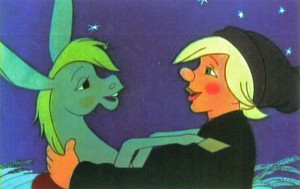 Gulliver’s Travels. Osmond includes Hoppity Goes to Town, but leaves Gulliver out. Excuse me, but Batman Beyond OVER the beautiful Fleischer gem? Something doesn’t smell so good.
Gulliver’s Travels. Osmond includes Hoppity Goes to Town, but leaves Gulliver out. Excuse me, but Batman Beyond OVER the beautiful Fleischer gem? Something doesn’t smell so good.Ratatouille. This is certainly one of the best of Pixar’s films. To include Finding Nemo and not this excellent feature by Brad Bird is just crazy. I suppose he had Bird’s The Incredibles and he wanted to write about Andrew Stanton.
And if you’re going to include films for the sake of the director, wouldn’t Chuck Jones‘ only feature, The Phantom Tollbooth, be included?
Neither UPA feature: Magoo’s 1001 Arabian Nights and Gay Purr-ee were both left out of the book. Given the heavy number of Japanese features, I would have found one to keep out to include a UPA example.
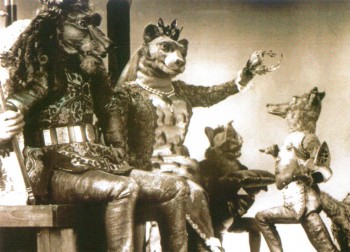 However despite any gripes, I have to say the book is solidly written and intelligently put together with a lot of thought going into the choices. It’s expected I’d have opposing thoughts on the titles included, but I admit to being intelligently challenged by the author. Andrew Osmond did a fine job, and the book is graphically attractive. I do wish, though, that the type were a bit larger. It looks like it’s about 8pt. and it’s too small for my aging eyes. The book was published by BFI Screen Guides.
However despite any gripes, I have to say the book is solidly written and intelligently put together with a lot of thought going into the choices. It’s expected I’d have opposing thoughts on the titles included, but I admit to being intelligently challenged by the author. Andrew Osmond did a fine job, and the book is graphically attractive. I do wish, though, that the type were a bit larger. It looks like it’s about 8pt. and it’s too small for my aging eyes. The book was published by BFI Screen Guides.
The images above can be found in the book.
1) Animal Farm
2) 101 Dalmatians
3) The Yellow Submarine
4) Ivan and His Magic Pony
5) The Tale of the Fox
I saw this film on line last Tuesday. Cartoon Brew posted it on Wedneday. If you saw it there, I’m pleased; if not this is for you. Matthias Hoegg‘s BAFTA nominated short, Thursday, can be seen online here. It’s an excellent film with a lot of the character necessarily developed through the animation. At the same website, there’s also an interview with Matthias about the making of the short. Take the 7 minutes to watch the film. A good use of cgi and 2D.
He’s represented by Beakus. Their site also showcases a number of his films.
Animation &Animation Artifacts &Independent Animation 12 Oct 2010 07:37 am
Animal Farm cast
I had some communication with Chris Rushworthy, an enormous fan of Halas and Batchelor’s Animal Farm. I had just watched the DVD again and wondered if Chris, who has an large collection of art from the film and has a website to showcase it – AnimalFarmWorld, had ever seen a set of drafts for the film. Which animator animated which scenes?
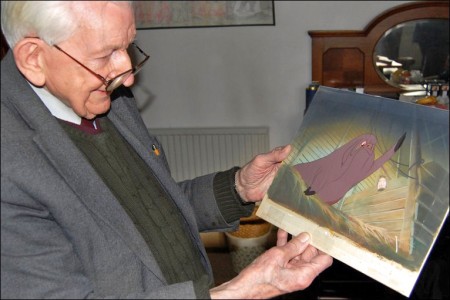
He didn’t have one, but that didn’t stop him from contacting Harold Whitaker, who was a key animator – not only on Animal Farm but for Halas & Batchelor – to ask if he had one. Whitaker responded with a signed card of people who had worked on the film. Interestingly enough, only three people who signed the card actually got screen credit, so I guess that many of the signers were from the Ink & Paint department. Whitaker is the only animator I recognize, to have signed the document.
Here’s the card, and alongside it I tried to identify the names – however, it isn’t easy reading all the signatures. Those that I’m sure I’ve got wrong, I’ve added question marks (????) to the names. If you’re confident of any of the names, please feel free to let me know.
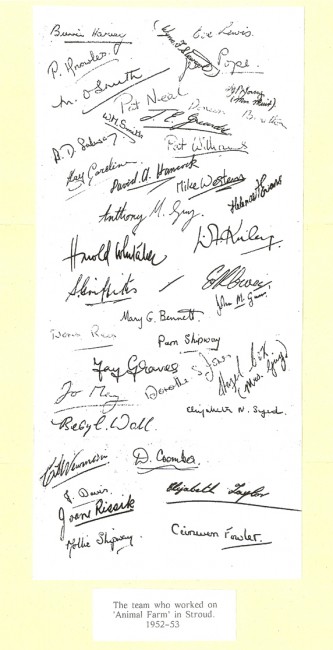
.
Bunnie Harvey
Wynn F. Stewart
Eve Lewis
P. Knowles
Jay Pope
M. O. Smith
Pat Neal
W. M. Smith
J.E.Grundy ???
Ty F. Young (Mrs. Muir)
Kay Coroline
Pat Williams
David A. Hancock
Mike Western
Helena F. Evans
Anthony M. Gray
B.D.Salway ???
Harold Whitaker - animator
D.F.Kniley ???
Sid Griffiths - camera
Mary G. Bennett
John M. Gurr – Camera
Doris Reis
Pam Shipway
Jay Graves
Jo May
Dorothy S. Jones
Hazel Box – (Mrs. Gray)
Beryl Wall
Elizabeth N. Syed
C. L. Newman
D. Coombes
J. Davis
Joan Rissik
Elizabeth Taylor
Mollie Shipway
Ceinwen Fowler
.
The film’s credits don’t offer a hell of a lot more. The names are few and they’re written in script. No first names – just a letter. H. Whittaker – yes, two “t”s even though the card above has just the one “t”. IMDB offers a few additional credits.
One not on IMDB is Gerald Potterton; he told me it was his first position as an inbetweener.
Chris Rushworthy also gave me a preview of a beautiful new setup he recently bought to add to the collection. This is it.
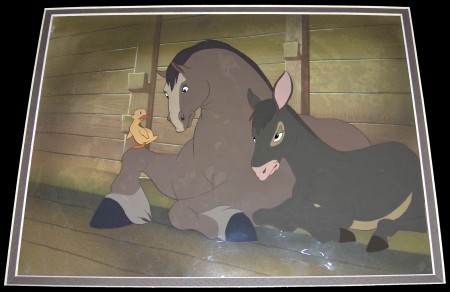
Boxer, Benjamin and duckling
Check out his site to see plenty of other cel setups and drawings.
Articles on Animation 27 Mar 2010 08:13 am
Harald Whitaker / Don Hahn
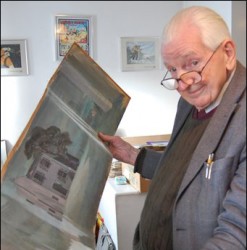 - I wasn’t aware that Harold Whitaker was still alive and kicking until I’d received this note from Animal Farm aficionado, Chris Rushworthy:
- I wasn’t aware that Harold Whitaker was still alive and kicking until I’d received this note from Animal Farm aficionado, Chris Rushworthy:
- I came across this BBC online article the other day. It has some very interesting images of Harold Whitaker and some of his Animal Farm collection. I salivated over the original background shown for the Old Major speech scene of which I have most cels and camera sheets.
Go here to see the pictoral piece.
Whittaker, of course, was the leading animator at the Halas & Batchelor studio for many years. After retiring from H&B, he wrote the book on Animation Timing that, to me, is one of the finest books available on animation production. The book, Timing for Animation, was recently updated by Tom Sito and is widely available. Everything in the book is explained in a deceptively simple way, yet it beams with clarity few other animation books achieve. I haven’t seen the updated version of the book, though I’m sure it stays true to Whitaker’s original.
Many thanks to Chris for directing me to this piece from the BBC; the photos are first rate.
Go here to visit Chris Rushworthy’s excellent site built around his collection of Animal Farm artwork.
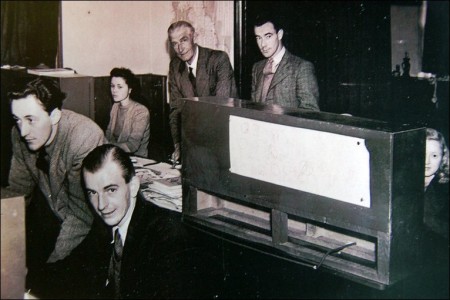
Whittaker (front center) at the Anson Dyer studio.
____________________
– With the opening yesterday of Waking Sleeping Beauty, there’s a timed interview with Don Hahn in the Onion’s AVClub. It’s a long and excellent read with some pointed questions asked and answered. Here, for example, is one that caught my eye:
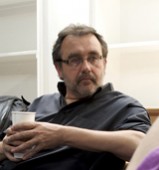 AVC: The story the film is telling changes throughout the film. It starts out being about the animators, and it ends up being about the executives. Did you always start out with that arc? Did it change as you got access to some of these people?
AVC: The story the film is telling changes throughout the film. It starts out being about the animators, and it ends up being about the executives. Did you always start out with that arc? Did it change as you got access to some of these people?
DH: We had access from the beginning. Some of the earliest talks we did were with some of the executives. I think what we wanted to do though, was—I didn’t want to create class distinctions between executives and artists. I didn’t want to create a good-guy/bad-guy scenario from the very beginning. I think that’s a little simplistic. The truth is, without the executive boldness and the artistic achievement, it wouldn’t have happened. I don’t think we even use the word “executive†in the movie. We talk about these people. We talk about who they are and what they do, but it was important to show that everybody had a role at the table, and if you pulled one of those people out, the checks and balances would be thrown off a little bit.
So the arc of the story was somewhat determined by what literally happened. It was a group of lost boys, a group of people right out of school with big dreams that couldn’t be expressed yet. And then having Wells and Eisner and Katzenberg come into the studio—at the same time Howard Ashman comes in—and you have this tremendous renaissance, a change in the approach, outsiders coming in, Roger Rabbit happening, and this huge growth in the potential of animation that culminates in great financial success, that culminates in some egos getting in the way. Then Frank Wells’ death is the domino that pushes over and starts to unravel a lot of those situations, which culminates in the end of the movie.
The film is a must-see for anyone connected with animation who takes Disney films seriously. It’s a strong entertainment and a producer’s vision of what he saw while living through it. Currently it’s at the Landmark Sunshine Theater in New York.
____________________
